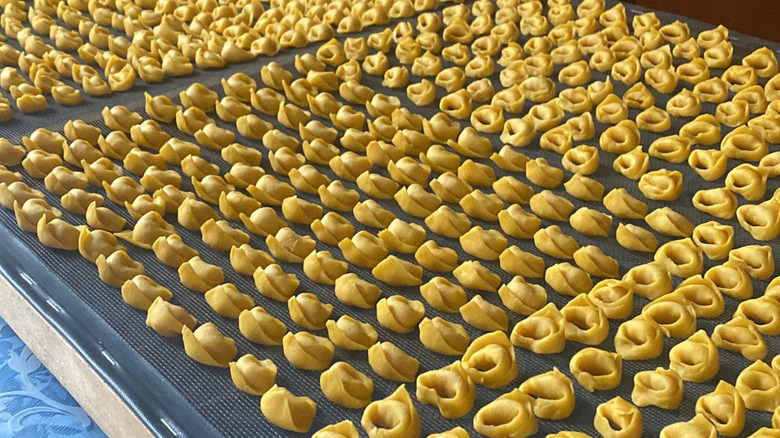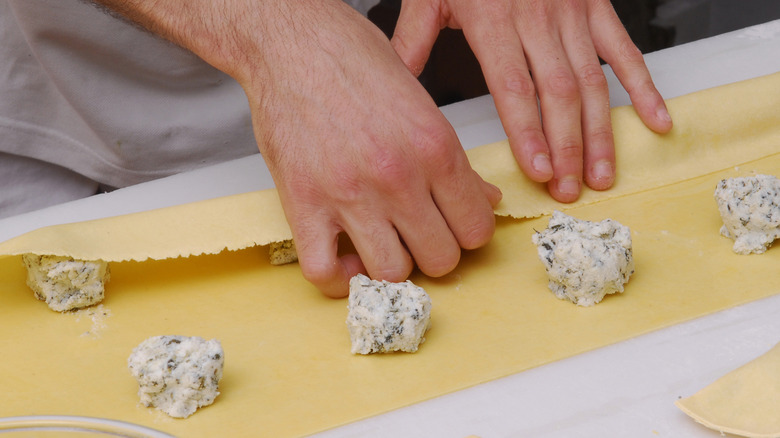Is There A Difference Between Tortellini And Tortelloni?
Tortellini and tortelloni are very similar pastas, but also have their differences. Having lived in Italy for a long time, I knew right away that one of the major differences was in the size. In the Italian language, they have what's called "altered nouns," where the ending of a word is changed to indicate its size, quality, or affection. The suffix "-ino" means small, and "-one" means large. The "i" on the end of the word makes it plural, so tortellini is the small version of the pasta and tortelloni is larger.
Tortellini is a ring-shaped stuffed pasta, typically filled with meat, cheese, or vegetables. The pasta is usually served in a delicate broth, particularly during celebrations like Christmas Eve, and if you're lucky, after some warm and delicious focaccia. Tortelloni is similarly shaped and usually filled with lighter ingredients that don't include meat, such as spinach and ricotta, and is served with richer sauces rather than broth.
Both pastas come from the Emilia-Romagna region of northern Italy and are fixtures of Italian cuisine. Their fillings and serving styles make them suited for different meals and occasions. Whether you prefer the petite tortellini or the heartier tortelloni, both bring a touch of Italy to the table.
How tortellini and tortelloni are prepared and served
Both tortellini and tortelloni start out with fresh pasta dough made from flour and eggs, but are cut differently depending on the preferred type. For tortellini, the filling usually consists of ground meat, such as beef or prosciutto, Parmesan cheese, or finely chopped vegetables such as mushrooms, carrots, celery, or leeks. These vegetables are typically sautéed with olive oil, butter, or garlic before being combined with cheeses or meats for a flavorful, cohesive filling.
Tortelloni, being larger, is usually filled with lighter options like ricotta and spinach. A small amount of filling is placed in the center of each cut piece, and the dough is folded over to create a half-moon shape. From there, the edges are sealed, and the pasta is shaped into rings for tortellini or larger pockets for tortelloni. Cooking times vary due to size, and as you would expect, tortelloni takes a little longer.
Both are ready when they float to the surface. Tortellini is traditionally served in a clear, flavorful broth, especially during festive occasions. Tortelloni pairs perfectly with rich sauces like butter and sage, creamy tomato, or a hearty meat sauce; a jarred sauce is sacrilegious in Italy, but here in the States, you can get away with it (especially after these transformative upgrades). Serve both with grated Parmesan cheese and freshly cracked black pepper to take their flavors to the next level. And don't forget to enjoy a delicious Grappa after your meal!

